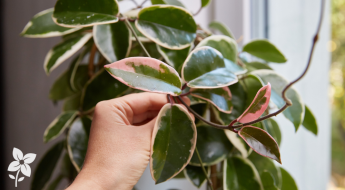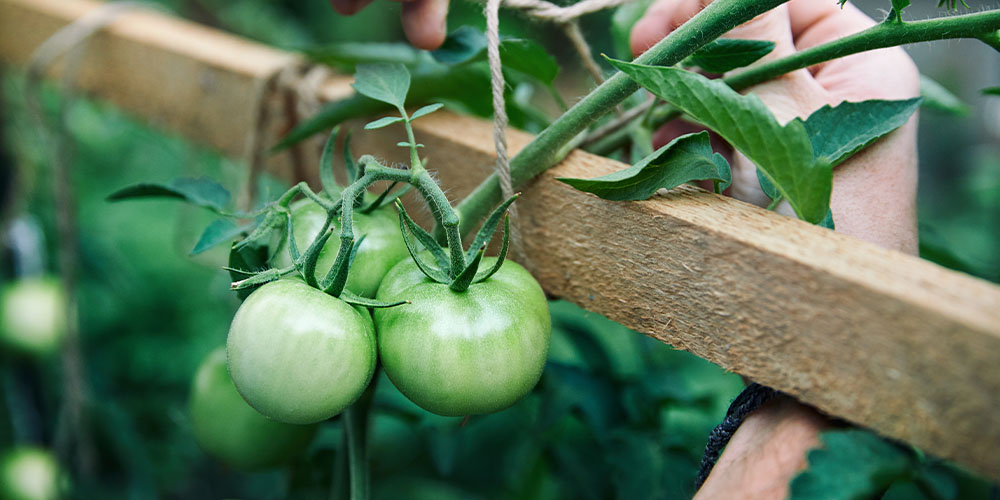
Your tomato plants are all settled into their new homes for the summer, and soon you’ll have a big tasty harvest to reward all your hard work in the garden! Meanwhile, there are some problems to watch out for and some tasks to stay on top of to ensure your tomato plants are on the right track.
Watching for early signs of pests and diseases will make it easier to deal with them before they get out of control, and regular upkeep will optimize the size and quality of your harvest. Here’s everything you need to do to complete your early summer tomato plant check-in!
Checking for Tomato Plant Diseases
Tomatoes can fall victim to various diseases, and some are easier to treat than others. Pay attention to the following signs, which usually indicate a bacterial or viral disease:
- Yellowing leaves on half of the plant or at the bottom of the plant
- Black, brown, or yellow spots
- Grey or white powdery coating
- Rotten patches on fruits
If you notice anything amiss and aren’t sure what the culprit is, we recommend taking a photo and showing one of our staff at Salisbury Greenhouse. We’ll help you identify the disease and devise a plan of action. You can treat several common tomato plant diseases by pruning the damaged parts and applying a copper fungicide. However, some diseases like Verticillium wilt are incurable and can only be prevented in future years through crop rotation.
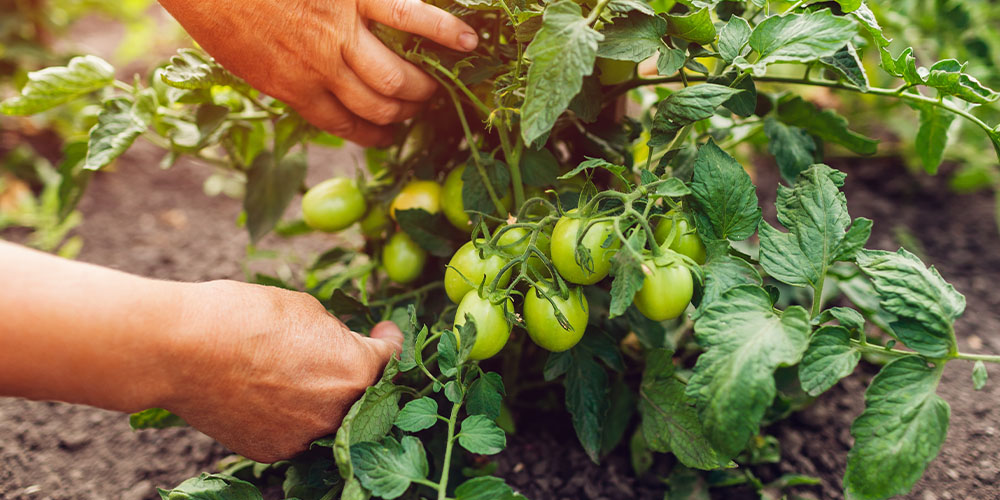 Keeping an Eye Out for Pests
Keeping an Eye Out for Pests
Pests can inflict a lot of damage to your tomato plants in a short time and can also carry and spread diseases. Promptly dealing with them is essential to ensure your harvest remains intact and edible! Watch for signs like visible chewed holes in leaves, and inspect the undersides regularly to see if any tiny bugs are hiding under there.
You can pick off larger pests like hornworms by hand, but you can eliminate most pests with a natural insecticide like neem oil or insecticidal soap. Spreading diatomaceous earth across the soil helps keep soft-bodied pests like worms, slugs, and snails away.
 Fertilizing Your Tomato Plants
Fertilizing Your Tomato Plants
Regular fertilizer applications are essential for your tomatoes””they grow so fast and require so many nutrients to produce all those tasty fruits! Plus, fertilizers fortified with nutrients are important for preventing diseases like blossom end rot, which often results from calcium deficiencies within your plant.
We recommend feeding your tomatoes at least once per month with a product specifically formulated for vegetables or tomatoes. Jobe’s Tomato Spikes are the easiest method””just press one fertilizer nugget into the soil near the base of your plant once per month. You can also use water-soluble fertilizers if you want something fast-acting. Grab an organic fertilizer instead of a synthetic formula if you want to maintain an organic vegetable garden. Always follow the directions of your fertilizer formula carefully. Mixing too strong a ratio or using too much can make your plant grow too fast, resulting in weak, leggy growth.
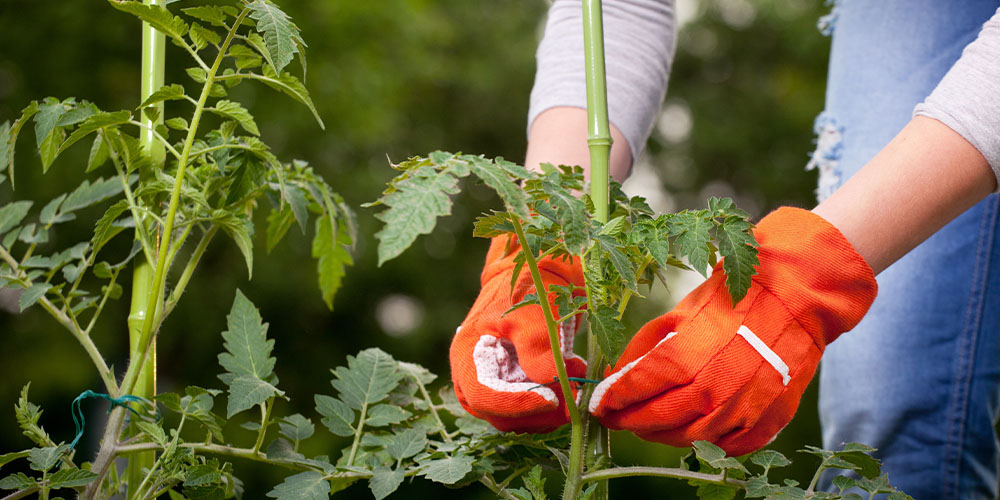 Staking and Training
Staking and Training
As your tomato plants grow taller, they’ll likely need some support to keep them upright. Tomato cages are an easy way to keep them upright, but you can also use stakes. Insert your stake deeply into the soil, a few inches away from the base of the plant, to avoid disturbing the roots. Take some twine and loosely tie the plant’s main stem to the stake. Don’t tie it tightly, or you may injure the plant or inhibit its growth. You may need to add more ties up along the stake as your plant grows.
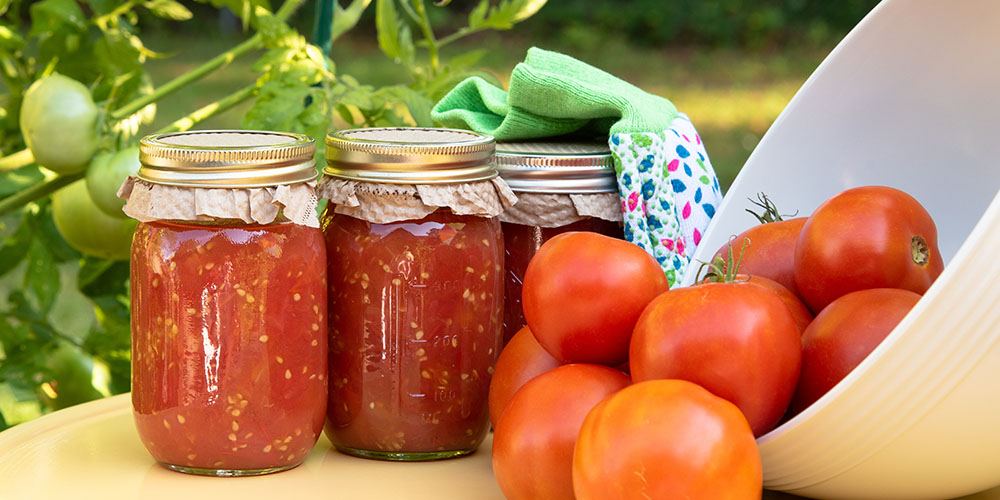 Preparing for Harvest
Preparing for Harvest
If you’re expecting a big harvest, it’s a good idea to get all your canning supplies ready ahead of time. That stuff can sell out quickly in the middle of canning season! For canning and preserves to work properly, you must follow the proper steps for sterilizing and sealing your cans. Feel free to ask our staff for pointers if this is your first time preserving your tomato harvest!
If you have any questions about tomato disease or pest identification, or if you’d like to bring home some tomato plants in Edmonton, visit Salisbury Greenhouse in Sherwood Park and St. Albert, and we can help you get everything sorted out!




